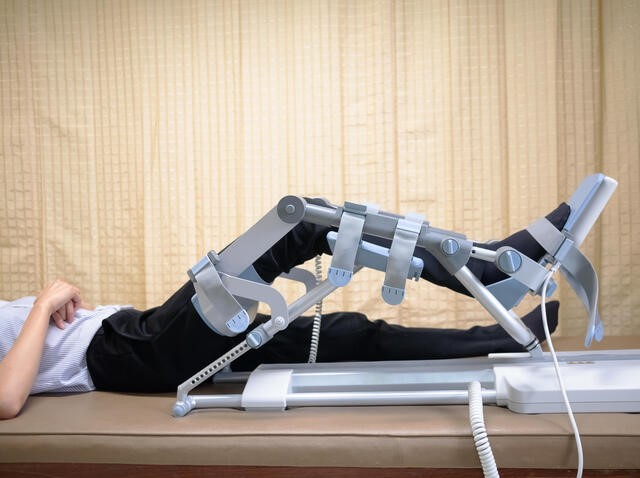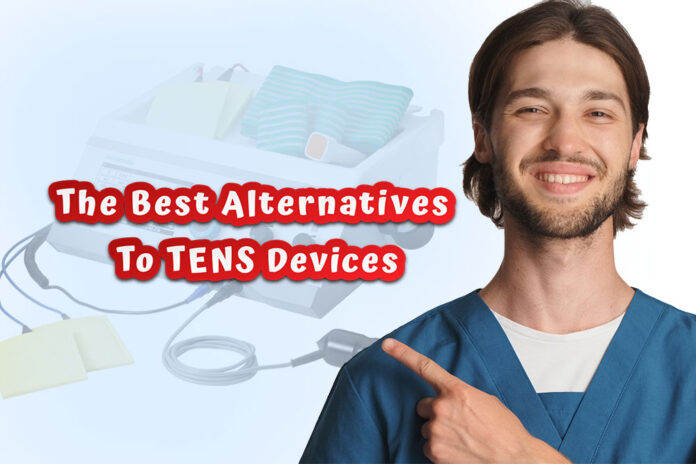Transcutaneous Electrical Nerve Stimulation devices are a non-invasive way to relieve pain. They deliver a small electrical current through electrodes placed on the skin that stimulate nerve fibers and block pain signals from reaching the brain. These devices can be used for a number of different types of conditions, including chronic back and joint pain and labor pains. However, not everyone is comfortable with using TENS devices due to their cost or because they may not be as effective as advertised by manufacturers. There are many alternatives to TENS devices that can be used to treat pain and are much more affordable. For example, Solio Alpha Plus, a pain relief device, is one of the best alternatives to TENS device against pain. It provides the same relief as TENS devices but with more benefits and at a fraction of their cost. In this blog post, we have discussed some alternatives to TENS devices that you can use to help relieve your pain.
Transcutaneous Electrical Nerve Stimulation Devices
Transcutaneous Electrical Nerve Stimulation devices are small, battery-powered machines that generate electrical impulses that stimulate the nerves. They’re used to treat chronic pain, including back pain, arthritis, and headaches. TENS devices work by sending gentle electrical pulses through electrodes placed on your skin. The signals interfere with the transmission of pain messages to your brain. TENS therapy is generally safe; however, you should talk to your doctor before using it.
Alternatives To TENS Devices
TENS devices work by sending electrical impulses to the nerves in your body. They’re used for pain relief, muscle relaxation, and even pain relief during labor. Because of the intense sensation they cause, some people find that they can’t tolerate wearing a TENS device for more than 20 minutes at a time. This is where some alternative devices and methods come in.
1. Continuous Passive Motion Technique

If you’re unfamiliar with CPM, it’s a physical therapy technique that uses your body’s natural movements to help heal. It’s most commonly used on patients who have had surgery but can also provide relief from other types of pain. CPM is done by moving whatever part of your body feels stiff or sore back and forth until you feel some relief. This can include moving your arms, legs, or neck in different directions for about 20 minutes until the pain disappears completely. You should only use this method if you have been given permission by a healthcare professional first (or if you know what you’re doing). Otherwise, they might tell you not to do it because they think it could cause more damage than good!
It’s important to remember that while CPM can be very helpful in treating certain types of injuries—especially ones caused by overuse—it won’t work for everyone all the time; everyone has different needs when it comes
2. Acupuncture

Acupuncture is a method of pain relief that has been practiced for thousands of years. Unlike TENS devices, acupuncture is not electrical and does not require connecting the device to your skin. Instead, acupuncture needles are inserted into different points of your body to stimulate certain nerves. The needles’ stimulation can provide local pain relief or help with swelling around an injury (if you’re injured). The benefits of acupuncture last longer than TENS therapy because they address root causes rather than just superficial symptoms like muscle tension or inflammation. Acupuncture also provides relaxation, which many people find very peaceful and relaxing!
3. Psychological Methods
Psychological methods include relaxation techniques, guided imagery, and medical hypnosis. Many people feel that these techniques are a better fit for their needs than TENS devices because they are less invasive. However, they must be used in conjunction with the device to realize their full potential.
Relaxation techniques involve deep breathing exercises, muscle relaxation, and mindfulness meditation to help you learn how to relax under stressful situations so that your body isn’t working against itself in pain management efforts. Guided imagery involves using your imagination to visualize yourself somewhere pleasant while listening to an audio recording of someone calmly guiding you through this process. Medical hypnosis helps you focus on your pain management goals by repeating positive affirmations or visualizations over and over again until they become ingrained in your subconscious mind—and thus, easier for the conscious part of your brain to access when needed later on down the road.
Final Thoughts
TENS devices have been around for a long time, but there are some great alternatives that might be better for you. If you’re looking for relief from pain without having to deal with the hassle of wires or pads on your skin, these options may be worth considering.
Read Also
- Discover Comfortable Assisted Living Options for SeniorsGrowing older brings changes, but it also opens doors to new beginnings. For many seniors, it’s a time to trade the stress of upkeep and isolation for peace, safety, and connection. Assisted living isn’t about giving up independence-it’s about gaining support that allows life to be enjoyed fully, without worry. Finding the right place means… Read more: Discover Comfortable Assisted Living Options for Seniors
- From Silence to Support: Mental Health in Older GenerationsDid you know that some adults aged 65 and older feel very sad or worried, just like younger people do? Many of them keep these feelings to themselves and don’t ask for help. This can make them feel even more alone. Sometimes, people are afraid to talk about mental health because they think others won’t… Read more: From Silence to Support: Mental Health in Older Generations
- Healthy Living Tips Every Senior Should Know for VitalityGrowing older brings new ways to enjoy life with balance and grace. Every choice made each day can shape how strong and lively one feels. Simple changes can lead to a brighter, more active lifestyle. Health at any age is about keeping the body and mind connected. It’s about living each day with purpose, ease,… Read more: Healthy Living Tips Every Senior Should Know for Vitality
- Enhancing Communication Skills in Senior CareEffective communication skills are essential in any caregiving environment, but they become even more critical in senior care. Seniors often face unique challenges, including physical, cognitive, and emotional changes that can impact their ability to communicate. Enhancing communication skills in senior care not only helps caregivers connect better with seniors, but it also significantly boosts… Read more: Enhancing Communication Skills in Senior Care
- Aging Gracefully: Wellness and Lifestyle Tips for SeniorsAging is a natural part of life, but how we approach it makes all the difference. Many seniors today are proving that growing older can mean living stronger, healthier, and happier. Imagine having the energy to enjoy hobbies, connect deeply with others, and feel confident every day; this demonstrates the power of the right wellness… Read more: Aging Gracefully: Wellness and Lifestyle Tips for Seniors






